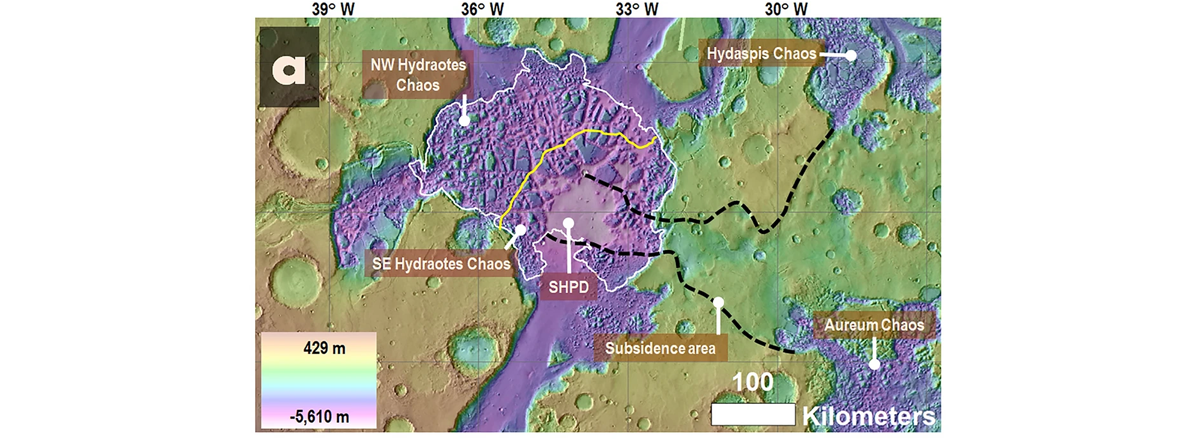A Mud Lake on Mars Might be Hiding Signs of Ancient Life
Around 3.4 billion years ago, this underground system was disrupted, resulting in massive floods that deposited mountains of sediment on the Martian surface. Hydraotes Chaos is a striking example of this geological upheaval.

In the region known as Hydraotes Chaos, researchers have identified traces of an ancient mud lake, raising the possibility of finding evidence of past life on the Red Planet. This discovery has been detailed in a recent publication in the journal Nature Scientific Reports. This is reported by Space.com.
According to the prevailing theory, surface water on Mars froze approximately 3.7 billion years ago, coinciding with a thinning of the planet's atmosphere and a drop in surface temperatures. However, groundwater could have remained liquid in vast underground chambers, potentially providing a habitat for life forms that could have left behind traces of their existence.
Around 3.4 billion years ago, this underground system was disrupted, resulting in massive floods that deposited mountains of sediment on the Martian surface. Hydraotes Chaos, characterized by its chaotic terrain of jagged valleys, craters, and mountains, is a striking example of this geological upheaval.
In the midst of this terrain lies a relatively calm, flat area marked by cones, domes, and signs of bubbling mud. This unique feature suggests that sediment didn't arrive through flash floods but rather surged from below, potentially driven by subsurface water.
Computer simulations support the idea that Hydraotes Chaos concealed a reservoir of buried water, rich in potential biosignatures, possibly in the form of thick ice sheets. Over time, this buried water could have risen to the surface, creating a muddy lake. As the water gradually dissipated, it might have left behind clues of ancient life.
Scientists are eager to explore what lies beneath the surface of this desiccated lake, which could offer insights into when Mars may have hosted life.

